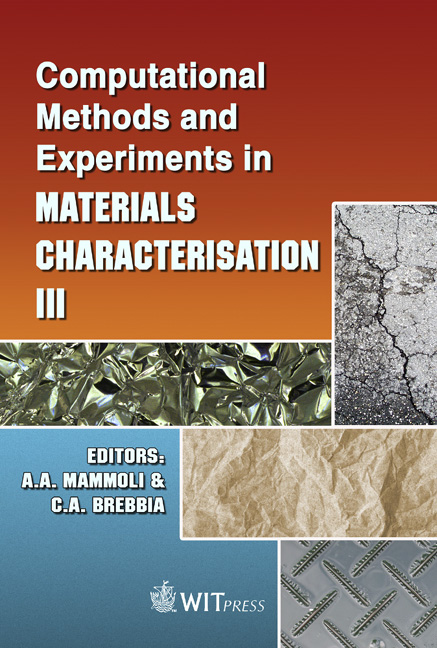Study On Static And Creep Properties Of CFRP Using Rubber Modified Matrix
Price
Free (open access)
Transaction
Volume
57
Pages
9
Published
2007
Size
1,068 kb
Paper DOI
10.2495/MC070011
Copyright
WIT Press
Author(s)
K. Takemura & Y. Yasuda
Abstract
In this study, the static and creep properties of Carbon Fiber Reinforced Plastics (CFRP) are examined. Plain woven carbon fabric is used as reinforcement. As the matrix, epoxy resin is modified by using cross-linked rubber particles. Four weight contents (0%, 5%, 10%, and 15%) of rubber modification are used. Three point bending loading is applied to the specimen. Static and creep tests are conducted. The results can be summarized as follows. For epoxy resin bulk and CFRP specimens, the strength and maximum strain decrease by rubber modification at static bending test, but the reduction rates of the strength and maximum strain for CFRP are smaller than those of resin bulk specimens. For example, when the weight content of rubber particles for epoxy resin is 5%, the strength reduces to about 50% and the maximum strain reduces to about 60% in the resin bulk specimen, but the strength and maximum strain reduce to about 35% and 25% respectively in CFRP. For the creep test, the creep strain rate in the secondary state is improved for CFRP with rubber modification. When the weight content of rubber particles is big, the improvement of the creep strain rate in the secondary state is great. For example, for CFRP whose weight content of rubber particles is 15%, the creep strain rate decreases by 25%. When an environmental temperature is beyond 120 degrees centigrade, the creep strain rate at the secondary state increases rapidly for unmodified CFRP, but the creep strain rate for modified CFRP is not so increased. So, an effect of rubber modification is great in the high temperature environment. In the case when the environmental temperature is 190 degrees centigrade, a 5% modification is most effective. Consequently, the rubber modification method for CFRP is effective for creep strain in an elevated temperature environment. Keywords: CFRP, epoxy, rubber modification, creep, bending loading.
Keywords
CFRP, epoxy, rubber modification, creep, bending loading.





